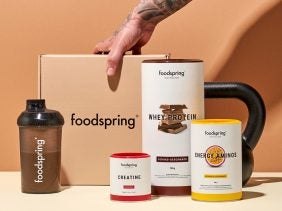Healthy Food: Recipes & tips for your daily life
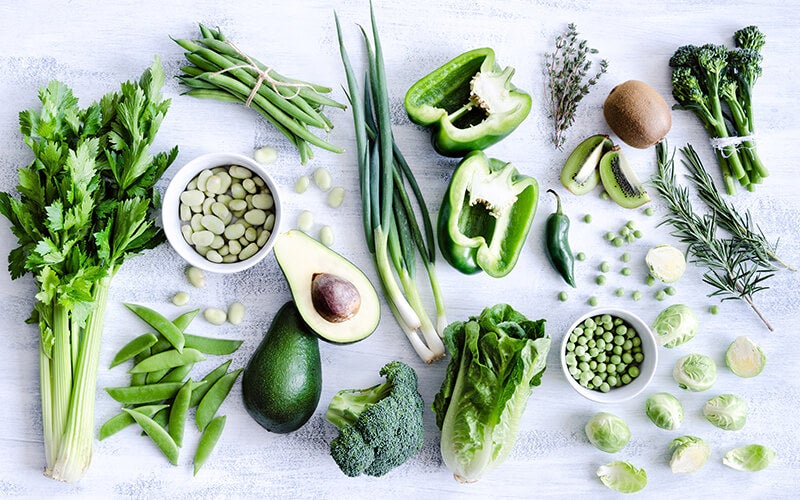 ©warrengoldswain-3
©warrengoldswain-3
Eating healthy is important, that much is clear! After all, they say you are what you eat. But even though we know healthy food is better in theory, it’s often hard to put into practice. To help keep your nutrition plans on track, we’ve put together our top 6 tips for making healthy eating easier. Even with your busy schedule!
What is healthy food anyway? How do I maintain a balanced diet in my busy everyday life? And how can I lose a few pounds with the right diet? We’ll show you everything you need to know with our 6 tips for practical healthy eating.
What Is Healthy Food?
There is no universal definition for the term healthy food. What’s healthy and what’s not cannot be defined in one way for everyone everywhere. But one thing is sure: whether it’s vegan, paleo, or clean eating – from a nutritional point of view, a healthy diet should always be balanced. What does that actually mean? For your body to function as it should, it needs a balanced mix of different micro- and macronutrients. We’ve outlined the basic pillars of a healthy diet so you can approach your meals the right way:
Healthy Food: Macronutrients
Most of your energy comes from macronutrients, or macros: carbs, fats, and proteins. They make up the foundation of all metabolic processes and are essential for your body to function. Your body gets all 3 nutrients from your diet.
Depending on your fitness goals (like losing weight or building muscle), it could be that you need to adjust your macronutrient ratios. With our Free Body Check, it just takes a few steps to figure out exactly how much of each nutrient you need for your personal goal.
According to the British Nutrition Foundation, a balanced diet should be made up of the following:
- Carbs: 50%
- Protein: 15-25%
- Fat: not more than 35%
For muscle building
Want to take your strength training to the next level? Then high-quality protein is the be-all and end-all in your nutrition plan. Whether it’s a creamy protein shake with different flavors after your workout – with us you’ll find the right fitness food for every goal and time of day. Say hello to protein power!
Healthy Food: Micronutrients
Vitamins, minerals, and trace elements are vital for your body and many of the essential nutrients you need can only be absorbed through your diet. That’s why it’s all the more important to eat fruits and vegetables every day.
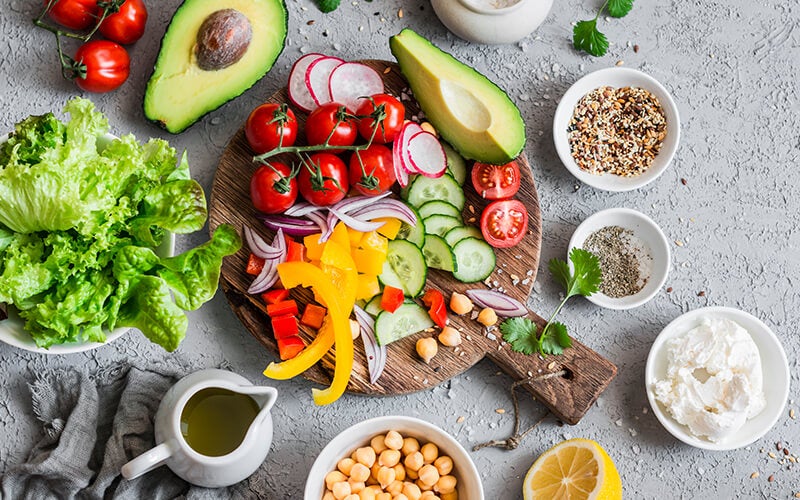
An overview of the most important vitamins:
VITAMIN B1
Physical activity (sports, stress, etc.) decreases the concentration of vitamin B1 in your blood and muscles. Vitamin B1 is stored in small amounts in the liver and is passed on to muscles that need it when they’re under stress.
VITAMIN B6
Vitamin B6 plays an important role in protein synthesis. A deficiency of B6 usually results in frequent cramps, muscle twitching, and weakness. The body’s need for vitamin B6 increases along with protein intake because vitamin B6 contributes to a healthy protein and glycogen metabolism.
VITAMIN E
Vitamin E is produced in nature by plants and animals with the help of photosynthesis. Vitamin E is especially important for the formation of antioxidants in the body, which help protect cells from oxidative stress. Vitamin E also contributes to normal carb metabolism and protein synthesis.
VITAMIN B9
Similar to vitamin E, vitamin B9 plays an important role in the metabolism of fats and proteins. Thus, sufficient B9 supply contributes to processes in the body’s DNA and RNA. Getting enough vitamin B9 also helps keep your heart functioning normally.
VITAMIN B12
Vitamin B12 is especially important to pay attention to in a vegan diet, because this vitamin is only found in larger quantities in animal products. Among other things, it contributes to a normal function of the nervous system and to a normal energy metabolism.
VITAMIN C
This multi-talent micronutrient contributes to reducing tiredness and fatigue as well as to the normal functioning of the immune system (your body’s defenses).
VITAMIN D
Vitamin D is also known as the sun hormone because it can be produced by the body itself – but only when enough sunlight in the form of UVB radiation reaches the skin. Vitamin D contributes to the maintenance of normal muscle function.
Tip:
Can’t completely cover your vitamin needs through your diet right now? Then you should check out our Daily Vitamins. They’ve got everything your body needs with the best of fruits and vegetables in a convenient capsule form. Perfect for busy and stressful times in your life.
Chick here for your new Daily Vitamins
An overview of the most important minerals
ZINC
Can be found in shellfish, among other foods. Zinc is especially important for the formation of numerous enzymes in the body.
IRON
Essential for blood formation. Occurs naturally in foods like meat and lentils.
MAGNESIUM
Magnesium, found mainly in chickpeas and pumpkin seeds, contributes to normal energy metabolism.
Healthy Food – Our 6 tips
Think that healthy food means giving up foods you love and struggling with complicated diet plans? Think again! Healthy eating is one thing above all: suitable for everyday use. Want some inspiration? Our finest fitness food has a wide selection of products for many balanced nutrition plans.
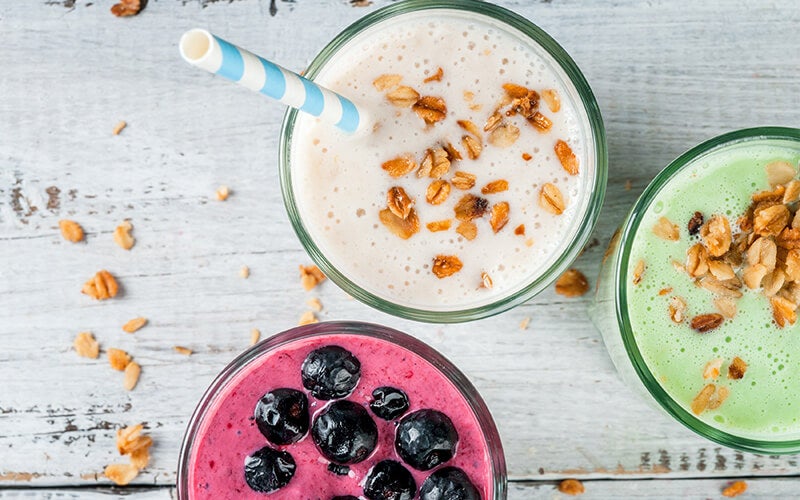
1. Old but gold: Eat lots of fruits and veggies
Fruits and vegetables are good for you, we’ve all heard that since we were kids. Even though it’s been said over and over again – it’s still true!
The NHS recommends eating 5 fruits and vegetables a day, but it’s also important to pay attention to the ratio. Often we eat too much fruit and too few vegetables, but it’s best to go for 3 servings of vegetables and 2 servings of fruit.
By the way, a handful of dried fruit or a glass of freshly squeezed orange juice also count as one serving. If you pack small carrot sticks, grapes, dried fruits and similar snacks for work, you’re well prepared – and you really don’t need much time.
2. Cooking healthy food: Turn unhealthy into healthy
Love burgers, pasta, and pizza? We’ll be honest: we wouldn’t want to give up these tasty treats either. But why always choose the “unhealthy” option? With our recipe ideas, we’ll show you how to conjure up these classics in healthy versions in no time at all. Plus, you can easily swap out unhealthy foods for the more balanced alternative. Here’s how:
Healthier alternatives for processed foods:
- Dried fruit instead of candy
- Home-cooked meals made from fresh ingredients instead of packaged foods
- Freshly squeezed juices instead of the sugary supermarket juice drinks
- Healthy snacks instead of snacks high in fat and sugar
- Whole grain products instead of refined products
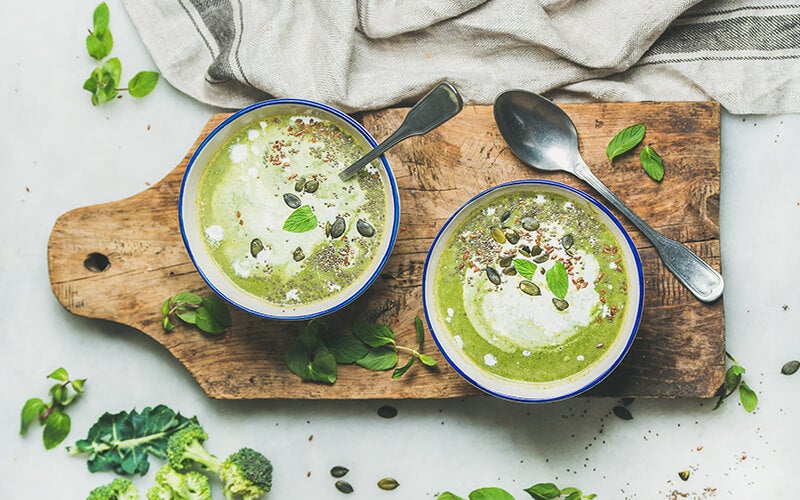
3. Everyday Healthy Food: Preparation is everything
We’ve all been there. You’re hungry after a long day at work, and there’s nothing in the fridge. But because you’re in a rush, you just go for the last package of pasta or the emergency frozen pizza. Sure, they stop your hunger pangs, but unfortunately they’re not really healthy. To keep this from happening, it’s a good idea to create a meal and nutrition plan. Once you’ve written out your meals, going shopping for the week will be much easier. You know what you need and don’t have to go out several times but just once for the whole week instead.
4. Eat natural and unprocessed foods as much as possible
A healthy diet should only include a minimal amount of industrially processed foods. Even when you’re in a supermarket, it’s best to go for fresh foods instead of packaged meals.
Preparing your own meals from fresh and unprocessed ingredients means you have control over what’s in them. The less pre-cooked or processed they are, the healthier they tend to be.
5. Healthy Snacks – The alternative to chocolate bars
Let’s be honest – when we have cravings, our sweet tooth tends to kick in, and we munch on high-sugar chocolate bars and other sweet temptations. Then comes the inevitable regret. But it doesn’t have to be that way! Our Protein Balls satisfy your sweet tooth with a better nutritional profile. No artificial flavors or added sugar, but packed with essential nutrients from organic fruits and nuts instead.
6. Healthy Food: Recipes for your busy schedule
Bring a breath of fresh air into your kitchen with our healthy food recipes! Have some fun with our colorful presentations and meals based on whole foods.
Winter Buddha Bowl

Look at how many amazing vegetables you can pack into one savory bowl of goodness. The bright colors are also great for fighting away the gray weather! Our tip: prepare your buddha bowl the night before so it’s ready to go for your packed lunch at work. Put the hummus on the bottom or in a separate container to avoid soggy spinach!
Low Carb Buddha Bowl
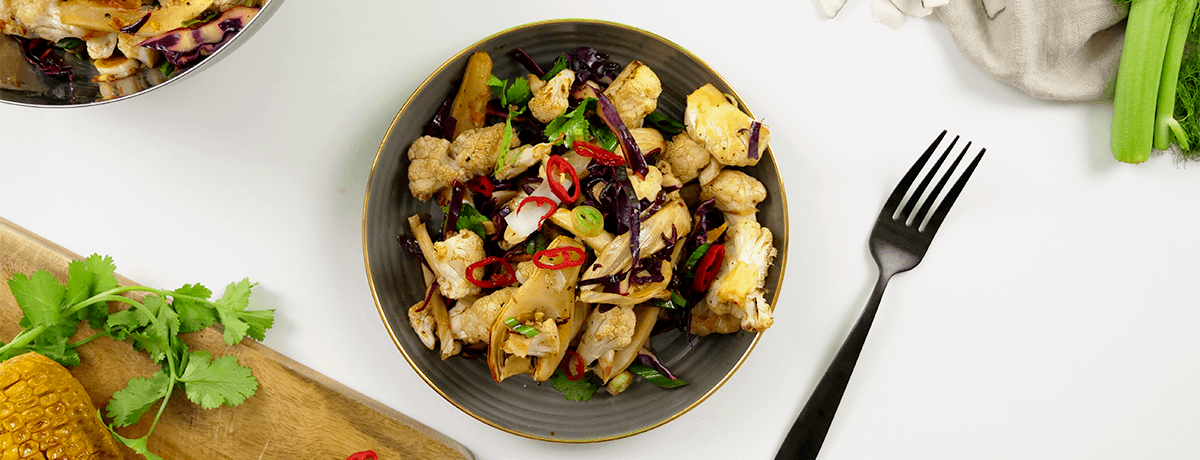
This refreshing salad boasts a combination of oven-roasted vegetables and a soy and ginger dressing. Perfect for when you want to have something light for dinner!
Gluten-free Muesli

A balanced breakfast is important for starting the day on the right foot. Supermarkets shelves are full of mueslis with tons of refined sugar. Our version is all about making the most of the natural sweetness of bananas.
Superfood curly kale salad

Vitamins, fiber, and tons of protein: with their impressive nutritional values, kale salads are always a good idea. Apples, cranberries, and a fresh lime dressing turn these superfood greens into a tasty meal you can’t get enough of.
Find out more about the benefits of chia seeds here.
The healthy Pasta-Alternative
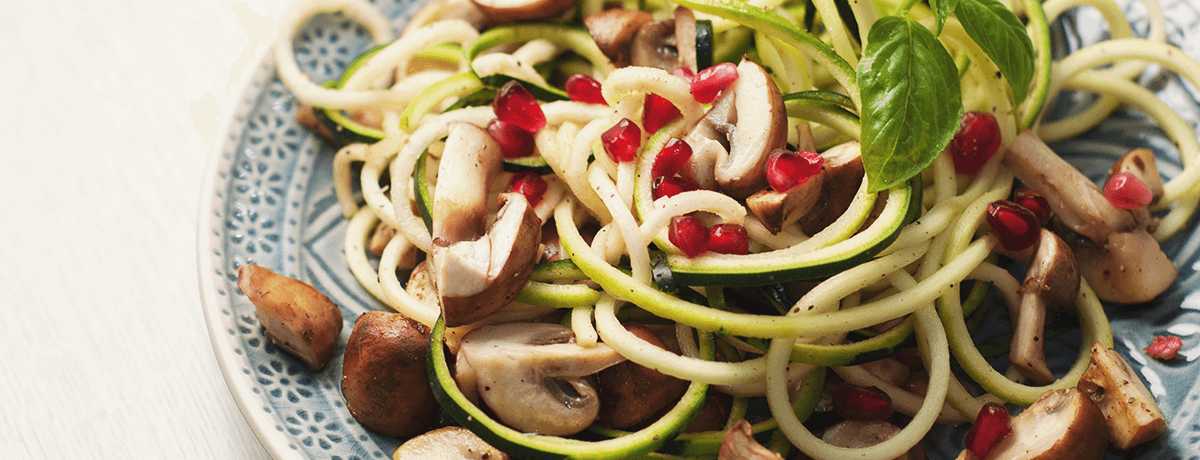
Never made your own zucchini noodles? Then now’s definitely the time! Zoodles are super easy to prepare, and they’re a great way to get closer to your 5 a day.
Conclusion
Healthy eating is easier than you think. With a little background know-how, the right foods, and a coordinated plan, you can eat healthy anytime, anywhere – even with a busy schedule. Just keep these tips in mind:
- Get inspired with our healthy fitness recipes
- Oldie but a goodie: Fruit and vegetables 5x a day (2:3)
- Avoid processed foods & fast food
- Snack yourself fit with healthy alternatives
- Create a nutrition plan & shopping list
- Pay attention to a balanced nutrient ratio
Sources for this article
We at foodspring use only high-quality sources, including peer-reviewed studies, to support the facts within our articles. Read our editorial policy to learn more about how we fact-check and keep our content accurate, reliable, and trustworthy.





























